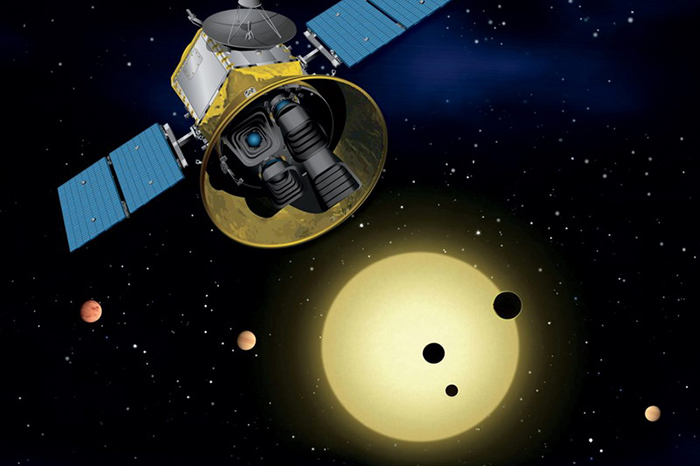The newest planet-hunting space telescope, the Transiting Exoplanet Survey Satellite (TESS), launched on April 18, 2018 from Cape Canaveral Air Force Station in Florida. TESS will now begin a two-year observing campaign of the entire sky. The mission is expected to discover thousands of exoplanets orbiting the nearest and brightest stars to our solar system. See also: Atmosphere; Exoplanet; Planet; Solar system; Star

To make these discoveries, TESS will monitor more than 200,000 stars for telltale dimming caused by exoplanets crossing their faces. TESS' predecessor, the Kepler space telescope, used this so-called transit method to great effect, finding around 2,700 exoplanets—nearly three-quarters of the known total to date. The Kepler worlds, however, are located hundreds or thousands of light-years away, making detailed characterization of them impossible, even with the next generation of ground- and space-based telescopes, such as the James Webb Space Telescope, which is slated for a 2020 launch. See also: James Webb Space Telescope (JWST); Kepler mission; Light; Light-year; Telescope; Transit (astronomy)
TESS' bounty of exoplanets should instead prove ideal for in-depth investigations. Instruments will be able to gather enough particles of light, or photons, to perform spectroscopy. This technique measures the absorption and emission of light by matter, revealing gases and their concentrations in planetary atmospheres. These gases speak to an exoplanet's overall composition, evolutionary history, and present climate. The particular mixture of gases also points to whether the planet is potentially habitable or, for that matter, potentially inhabited. Through biological processes such as respiration, terrestrial life modifies the contents of Earth's atmosphere. If these so-called biosignatures are discovered in an exoplanet's atmosphere, it would serve as the first compelling evidence of the existence of extraterrestrial life. See also: Astrobiology; Climate modeling; Extraterrestrial intelligence; Matter (physics); Photon; Plant respiration; Respiration; Spectroscopy





